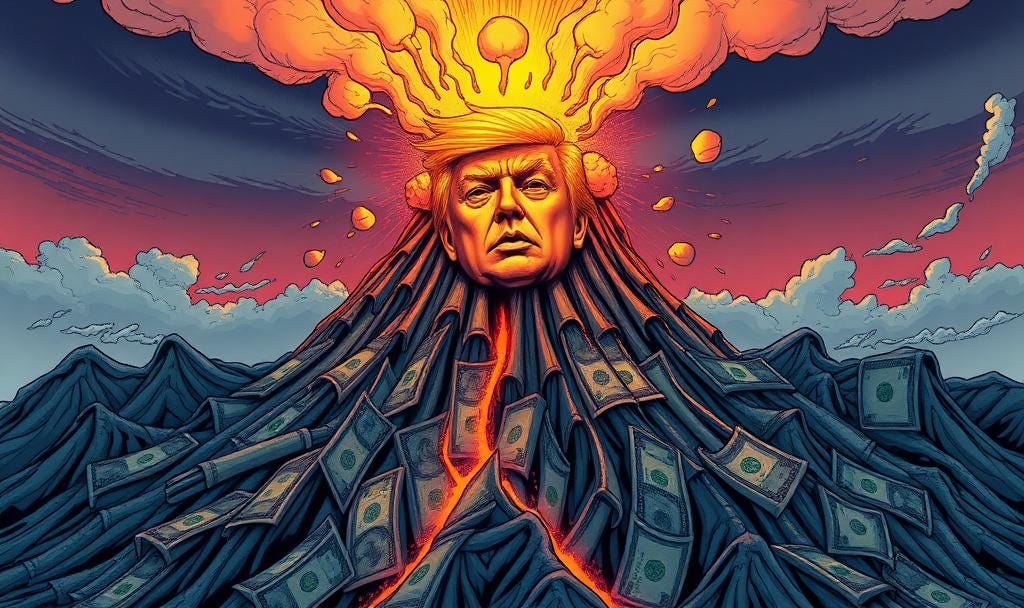THE DEEPER DIVE: The Tariffirma ain't so Firma
It's an inflation volcano getting ready to blow. After it does, the economy will collapse into a caldera of debt Trump helped create. Many signs of eruptive pressure are showing up on the surface now.
With second-quarter GDP roaring upward at a bold 3.0% rate of growth, after a first quarter that subsided -0.5% as the economy cratered, how stable is that 3.0 economic rise? To answer that question, as we probe down to find the true state of the underlying economy, we need to figure out first WHY that crater floor bulged upward so quickly.
I’m going to let one of the articles from last week answer that, so you know it is not just me saying this in order to prove the point I made when I forecast GDP would likely rise in the second quarter of this recession due to the front-running of tariffs, creating the temporary illusion of a return to actual growth:
“Big rebound in GDP masks hidden weakness in the US economy”
The US economy expanded sharply in the second quarter as businesses dialed back on imports after stocking up earlier in the year to get ahead of President Donald Trump’s tariffs. But a look under the hood shows an economy that’s sputtering….
The tariff-driven buying frenzies in the beginning of the year have made it difficult to asses [sic.] the underlying health and direction of the world’s largest economy. The back-and-forth stockpiling and selling of inventories before and after Trump imposed tariffs appears to be masking an underlying weakness in consumer and business spending.
In other words, the sudden upthrust was inflated by the front-running of tariffs, pulling future business energy into the present at the cost of future cooling. That means GDP will decline again after all the huffing and puffing from on-and-off tariffs settles down. Now that most tariffs are in place, there likely won’t be any more rush to get ahead of them. Instead, we’ll be pulling down stockpiled inventories to avoid purchasing under higher tariffs as long as possible since the reasons for front-running were not just to cut business costs but primarily to avoid the necessity of raising prices any sooner than necessary.
Consumer spending also picked up in the second quarter, but that is hardly surprising as many wary and weary consumers saw the wisdom of stocking up ahead of tariffs, too. As and example of that behavior, I’ve mentioned that I knew I’d be needing a new car in another year and figured tariffs, by then, will make even used cars much more expensive, so I moved the purchase up. That kind of preparatory activity will reverse as budgets get stressed and consumers feed off of the stores they’ve put in.
The deeper truths under the headline GDP figure are the kind of numbers that would make Trump anxious to fire some statisticians for reporting the wrong truths, instead of his “alternative facts;” except that it is not likely he reads beyond the headlines in order to even be aware of those facts, unless the article is about him. He’s a big-picture man where it is easy to ignore the boring details.
“Headline numbers are hiding the economy’s true performance, which is slowing as tariffs take a bite out of activity,” Kathy Bostjancic, chief economist at Nationwide, said in commentary issued Wednesday. “If core GDP performance continues at this pace, we expect there will be even more pressure on the Fed to lower rates as the economy slows.”




